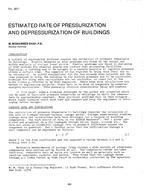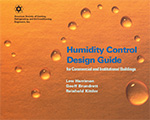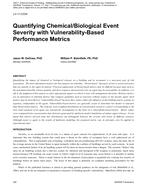Water heating represents a significant amount of energy use in the Hotel/Motel sector yet information currently used for designing and sizing hotel/motel water heating systems predates modern energy efficient fixtures and appliances such as low-flow shower heads and efficient clothes and dish washers. Moreover, existing hotel/motel hot water system design practices have been conservative because information on hot water use has been lacking. The purpose of this work was both to collect detailed hot water use data from two hotels which could be used to update hotel hot water system design practices, and to develop data collection and analysis approaches which could be used by others to collect similar information in order to expand our knowledge of how hot water is used in hotels.
This report describes the data collection and analysis approaches developed in sufficient detail that others may duplicate what was done. These fairly low-cost monitoring approaches are easily installed without plumbing or electrical modifications, yet allow collection of details on individual fixture and appliance hot water end use draw patterns, and their time diversity throughout the day and throughout the year.
This report also presents data from one average size "travel" hotel and one medium size "business" hotel. The business hotel used 2.6 million gallons (9.8×106 liters) of hot water during the 13 month test program, while the travel hotel used 769,000 gallons (2.9×106 liters) of hot water. This work showed that design day number of guests per room and bathing behaviors were similar for the two hotels tested. Hence the portion of overall hotel hot water use due to guest room (bathing + sink + cleaning) scales well with number of guests and is likely similar for most hotels. However, it was also learned that hotels additionally have a significant amount of hot water use that is not proportional to occupancy, rather being most likely used for cleaning and other support of non-guest-room areas and equipment such as meeting rooms and food service facilities. Thus hotel hot water use is not just proportional to number of guests or occupied rooms; there is a significant portion of hot water use that is independent of occupancy.
Importantly, this report normalizes the hot water use results and shows a procedure allowing designers to perform heating rate vs storage volume system design and sizing trade offs for hotels of different sizes than studied here. Additionally, the report disaggregates hot water use by several end use categories such as commercial clothes washing machines, dishwashing machines, bathing, cleaning operations, and sink use, and then presents design information with and without some of those end use categories so that readers can appropriately design hotels with vs without some of those end uses.
One important finding from this work is that bathing events do not overlap nearly to the extent apparently assumed during sizing of piping to serve guest room hot water circuits. As a result it appears that some piping systems use much larger diameter piping than needed. Using smaller diameter piping could result in a significant reduction in initial costs. The report shows a simple method of determining peak design dayhot water flow rates for use in sizing piping.
Applications, Values, and Use
Results of this work can be used to better design hotel/motel potable hot water systems, and to allow others to collect similar data so that design information can be expanded.
Citation: ASHRAE Research
Product Details
- Published:
- 2015
- Number of Pages:
- 236
- Units of Measure:
- Dual
- File Size:
- 1 file , 8.1 MB
- Product Code(s):
- D-RP-1544


